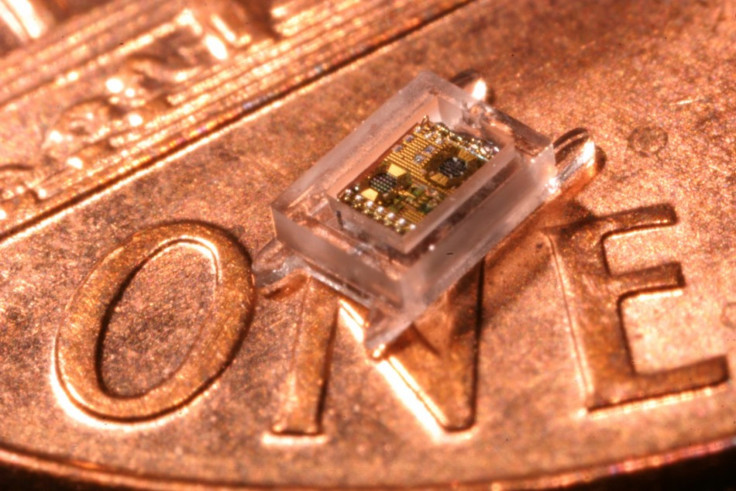A microcomputer that may fit in your eye

Researchers have developed what is believed to be the first complete millimeter-scale computing system, designed to be implanted into the human eye to track the progress of glaucoma, a potentially blinding disorder.
University of Michigan researchers say the nearly invisible millimeter-scale systems could enable ubiquitous computing - the future of the industry.
Researchers have developed a prototype of an implantable eye pressure monitor with energy-autonomous operation and wireless communication.
The device is expected to be commercially available in several years, if not decades.
The system, just over one cubic millimeter in size, features an ultra low-power microprocessor, a pressure sensor, memory, a thin-film battery, a solar cell and a wireless radio with an antenna that can transmit data to an external reader device that would be held near the eye.
According to the researchers, the newest system wakes every 15 minutes to take measurements and consumes an average of 5.3 nanowatts.
The monitor harvests solar energy that enters the eye through the transparent cornea to achieve energy-autonomy. The monitor requires 10 hours of indoor light each day or 1.5 hours of sunlight to achieve energy-autonomy. It can store up to a week's worth of information.
This is the first true millimeter-scale complete computing system, says University of Michigan professor Dennis Sylvester, who leads the project. Our work is unique in the sense that we're thinking about complete systems in which all the components are low-power and fit on the chip. We can collect data, store it and transmit it. The applications for systems of this size are endless.
Researchers have also developed a compact radio that needs no tuning to find the right frequency. This could be a key enabler to organizing millimeter-scale systems into wireless sensor networks, they say.
This is the first integrated antenna that also serves as its own reference. The radio on our chip doesn't need external tuning. Once you deploy a network of these, they'll automatically align at the same frequency, says assistant professor David Wentzloff.
According to the researchers, the millimeter-scale systems will also have a host of new applications for monitoring human bodies and environment. The networks could one day track pollution, monitor structural integrity, perform surveillance, or make virtually any object smart and trackable.
The researchers are now working on lowering the radio's power consumption so that it's compatible with millimeter-scale batteries.
© Copyright IBTimes 2024. All rights reserved.





















